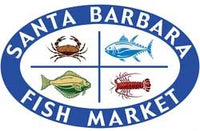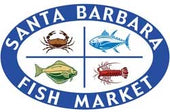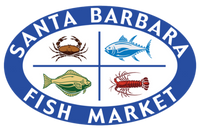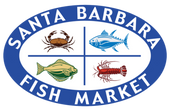White Seabass - Atractoscion nobilis

The white seabass is a species of the croaker and drum family of fish. They travel from Baja California to Alaska growing large on a diet of squid, crabs and smaller fish like sardines and anchovies. The white seabass is the largest croaker in the Pacific Ocean. The largest recorded weight is 83 pounds, but few attain weights of over 60 pounds. They may reach twenty years in age. Adults are predominantly found in and around coastal kelp beds and rocky offshore islands, where they may exist as solitary individuals or congregate in schools.
There have been commercial and recreational fisheries for white seabass in California since the 1890s. White seabass populations were in decline from the 1960s through the 1980s. However, new management efforts, including supplementing the wild population with hatchery-raised fish, have helped California's population recover. For nearly ten years, the California Department of Fish & Game's Ocean Research Enhancement and Hatchery Panel has worked in concert with several organizations in capturing, breeding and raising thousands of white seabass. Before the fish are released at 6-8 inches in length, each one is implanted with a microscopic tag to allow tracking of its movement and growth should it be caught in the future. The development of these hatcheries has helped to increase the population of white seabass and to create jobs. Now the white seabass population is so strong and the practices of its fishing industry are so responsible that the Monterey Bay Aquarium Seafood Watch List rates hook-and-line caught white seabass as a "Best Choice."
White seabass is juicy, and succulent with a rich, sweet flavor. The flesh cooks up pale as milk, firm and meaty. The fillets are thick but the taste is mild and lovely. You can serve white seabass to family members who don't want their fish to taste fishy, and you can prepare it without worrying that cooking it for a couple minutes too long is going to result in a dried-out dinner. It's perfect for the grill, great seared in a pan, broiled or even slow-cooked on the barbecue. And, if you are looking to improvise, it pairs well with sweet flavors, from citrus juices to mango to honey.
Simple Yet Elegant: White Seabass with Roasted Red Peppers
Ingredients:
- 1 pound of white seabass steaks
- Salt
- Flour for dusting
- 2 tablespoons olive oil
- 4-5 roasted red peppers from a jar
- Finely chopped chives, about 1 tablespoon per diner
Preparation:
Cut your fish into rectangles about the size of a deck of cards. Salt your fish pieces well and let them rest.
Take the roasted red peppers from the jar, and lay flat on a piece of paper towel to drain. Once the peppers have drained a bit, about 5-10 minutes, press a round mould on the pepper to create a nice circle of red pepper. Put the pepper circle onto a serving plate.
Heat a sauté pan over high heat for 2 minutes. Once it is hot, add olive oil and turn heat down to medium high. Let this get hot for another minute or two.
Meanwhile, dust your fish with flour. You want a light coating, not a heavy one. Arrange your fish in the hot pan and cook at medium to medium-high heat. You do not want the pan to be ripping hot, as you are working with thick fish steaks, not thin fillets.
Cook the fish on all sides. Keep it on the first side the longest. How long? Watch the sides of the fish; it will cook upwards. When it is about 1/3 of the way up, turn. Cook for another 3-4 minutes, depending on the thickness. To serve, remove the fish pieces and let them rest on a paper towel for 2-3 minutes. Find the nicest-looking side and make sure that one is facing up. Place a fish steak in the center of the red pepper circle, then sprinkle everything with the chives.



